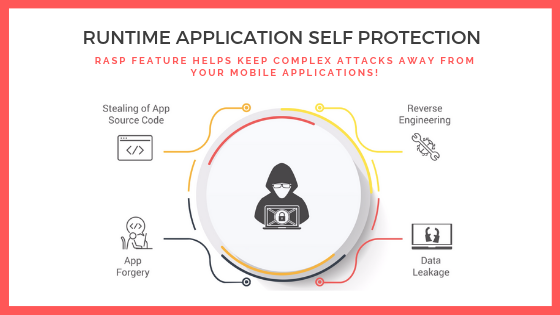Everything You Need To Know About RASP Security
Mobile is a device which is most popular in this era. It has ample features that prove highly beneficial to users. Keeping the features and utility of this small device, the makers add to their range of products and launch new models. The users can get the best of the utility from this device with the help of various apps present on different platforms. However, to avail the best-featured app the makers have to strive hard which users hardly know. If you are running an app or planning to start your own app to provide better service to your customers, you need to understand the security risks involved in this process.
Even though the market has many apps for different purposes, most of them have some or the other vulnerability that can limit their progress in the long run. One attack at the wrong time can ruin the entire business of the app and customers will completely lose trust in such apps. We have seen many such attacks in the recent past. In this regard, RASP Security also known as Runtime Application Self Protection comes to your rescue.
How RASP is different from traditional security?
It can monitor the threats in real-time and set aside such programs from affecting the entire app. In this way, proactive steps are taken towards handling the attacks and it does not cause any slowdown or shutdown of your app. In normal circumstances, most people realize an attack after it has caused significant damage. When it comes to doing damage control, normal security features block the entire functioning of the app to rectify the attack. However, RASP can handle the attacks in realtime and protect your apps from various threats.
Why does your app need RASP?
To understand the importance of RASP Security, you need to understand the different types of attacks that can happen with your apps.
The threat for your source code
Attackers may try to steal the source code of your app when they gain access to the root files of your app. This is done to clone your app and they can sell it to other companies. This way, your hard work will completely go in vain as someone else has stolen your app and replicated all the features of your app. In the worst-case scenario, they may even make some changes and release a better version of your app.
Reverse Engineering mode of attack
Most attackers use the reverse engineering method to analyze flaws in your app. In this way, they will get full control over the functioning of your app and you will be at their mercy in the future. Programmers should devise methods that can detect such attempts in the initial stages and block such attempts.
App forgery attack
Some attackers may resort to app forgery and this can significantly affect the reputation of your app in the market. You will be left with fighting various legal issues when something goes wrong in this case.
Attack to steal data
The most common reason attackers try to get hold of any app is to hack data. Any app contains some or the other data about its users. Attackers always prefer data leakage in an easy way so that they can use it for malicious purposes in the future. If your business app is having lots of users, you need better security measures to prevent user data leakage.
How RASP can protect your apps?
When you take into consideration the traditional method of protecting your apps with firewalls and other applications, you are mostly analyzing incoming web traffic for suspicious activities. The firewall will come into a picture when a known attack is triggered and it will block such requests. However, due to the constantly changing nature of attacks that are happening in recent years, it is essential to process such attacks in a real-time environment.
This is where you need RASP Security as it sits along with your code and monitors the traffic on your app. This in no way affects your app performance and users will not face any difficulty in accessing different features of your app. However, as soon as any threat is noticed, the RASP program can get into action and protect your app from any sort of attack. The runtime protection measures are used in this setup which can identify threats even before they do any sort of damage to your app.
Deployment modes of RASP
The RASP Security can be deployed in multiple modes according to your individual requirement. It is also possible to change the modes at a later stage depending on the changing work environment.
- The off mode can be set when you do not want RASP to monitor any traffic on your app. It will allow all requests to pass through the program without taking any measures to protect the app in any manner.
- When you want to only monitor the activities, you can set the security to the diagnostic mode and this will monitor and report all sorts of activities on your app. When any suspicious activity is found on the app, it will raise an alert and record the issue in the log. It will, however, not block any requests from users.
- When you set the program in the block mode, it will stop all malicious requests and inform you about them in real-time. It will not wait for your permission to block such attacks and will process the illegitimate request by terminating it completely.
- You also have the option to block any request based on certain parameters. In this way, you get the flexibility to customize the security solution according to your requirement.
Considering all these advantages, you should always prefer to have RASP security for your apps in the future. The number of attacks is increasing with every passing year and the nature of attacks is also changing at a drastic pace. In this situation, only real-time monitoring solutions provide the best security for your apps.
















